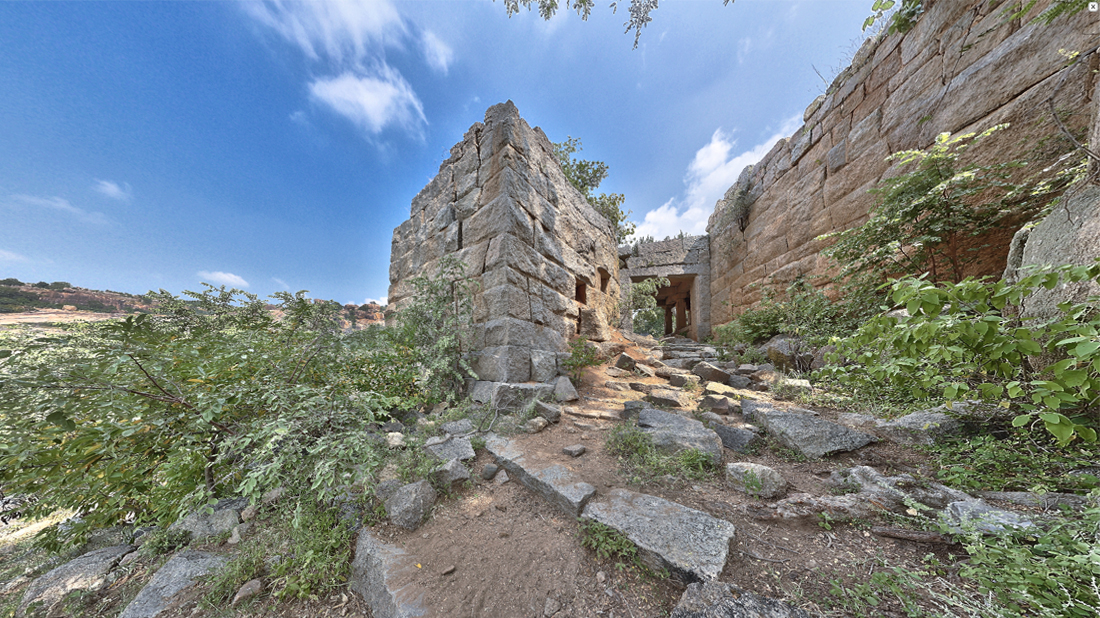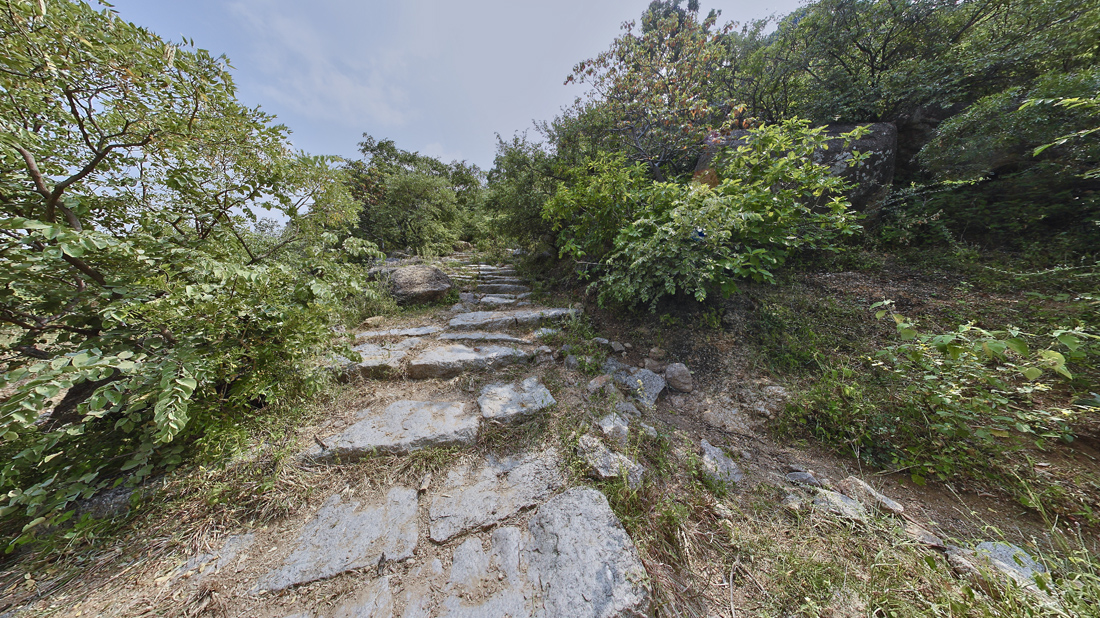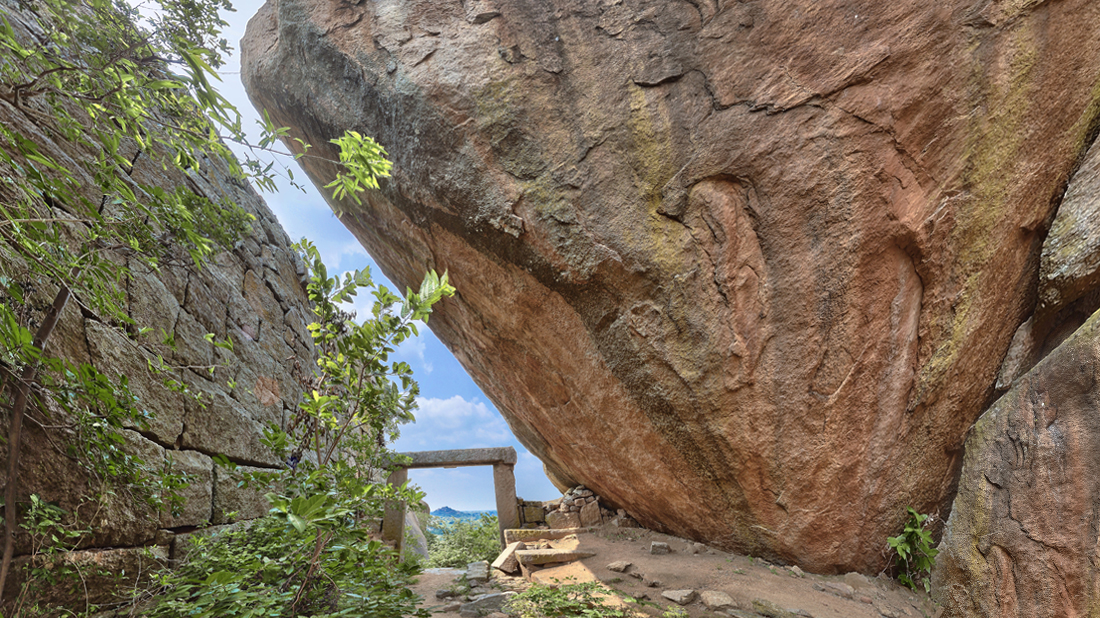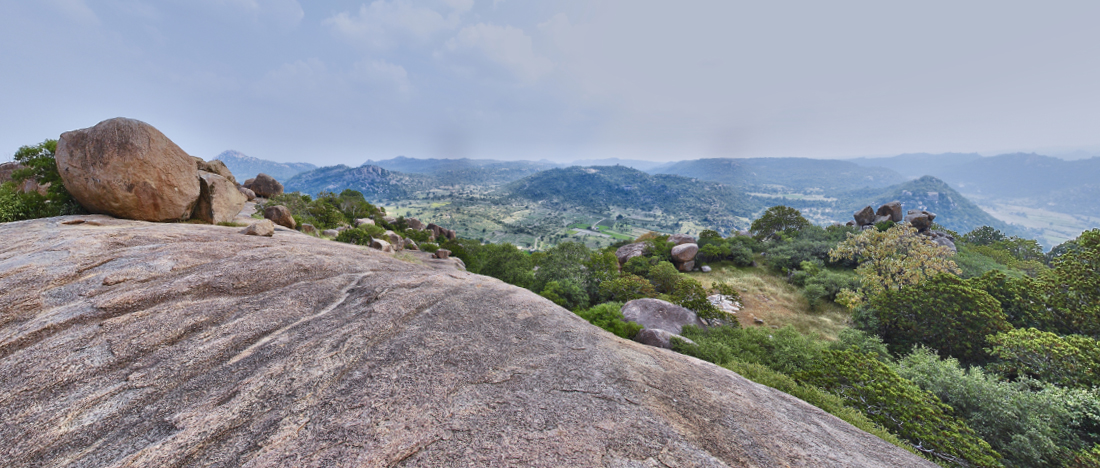This tour has 17 nodes/spots in all. To view each of the spot, please hover the mouse over the thumbnails and click on it in the bottom middle of the tour window. If you wish to view this spot on the tour map, click on the Map button on the left bottom corner.
Rachakonda Fort
Rachakonda Fort was constructed in 14th century by Recherla Singama Nayak from Padma Nayaka dynasty who ruled the region of Rachakonda. The Fort was the capital to the Rachakonda region. The region was first ruled by Kakatiyas, Padma Nayakas, Bahmani Sultans, Qutub Shahi and finally Nizams.
History
The original kings of Rachakonda were chieftains of the Recherla clan and Padmanayaka (Velama) caste who rose to rule over the entire Telangana during the post-Kakatiya and pre-Bahamani period in the Deccan. Due to family quarrels over power, their cousins later ruled over a separate state centered at Devarakonda fort. Rachakonda acted as a buffer State between the Muslim Bahamani
kingdom and the Hindu Vijayanagara empire and was subsequently taken over by the Bahamanis in 1433 during the Velama rule. Rachakonda was unique that in spite of its small size and frequent tensions, Telugu literature received major patronage and flourished. Most famous was Sarvajna Singha Bhoopala III of the Recherla clan, the last king of Rachakonda, who patronized both
Bammera Pothana and Srinatha – legendary Telugu poets. By Shitab Khan’s time in the late 15th century, the Bahmanis had recently acquired this important buffer state on their eastern frontiers. Bammera Pothana’s Bhogini Dandakam contains excellent descriptions of Rachakonda fort and city life in its last glory days under Singha Bhoopala III before the Bahmani conquest.
From 1480 to 1485, Sitapati Raju titled Shitab Khan was the Bahmani governor of Rachakonda (near Narayanpur in modern Nalgonda district, Telangana). He seems to have taken advantage of the internal turmoils of the Bahmanis and declared his independence in 1503, ruling from the Rachakonda, Warangal and Khammam forts from 1503 to 1512.
In 1498, the last Bahmani governor of Telangana, Qutubul Mulk Dakhani, controlled the territory of Golconda. As the Bahamani empire crumbled, he declared independence and then conquered Rachakonda, Warangal, Khammam, Koilkonda, Kondapalli forts by 1515 and went on to build the edifice of the Qutub Shahi dynasty. Rachakonda the fort, offers a good example of medieval Hindu fort architecture. The construction is of cyclopean masonry, and the whole fort is devoid of the use of mortar
About the Place
The fort is built in two floors. The fort displays a breath taking view of the entire city, when you stand at the fort’s South East corner. The entrance of the Rachakonda fort serves as an outstanding example of monolith pillars. The uniqueness of this fort lies in its construction; it has been built without using any mortar in cyclopean masonry. The fort is also adored with
beams and lintels with enthralling rock cut walls. Each and every inch of this fort provides plenty of fodder to feed the high appetite of history lovers.
How to Reach
To reach rachakonda fort from hyderabad – go on nagarjunasagar highway up to ibrahimpatnam (20 km), there take turn to manchala village(7 km), then take a road to tippaiguda(4 km), from there the fort is 2 km only. It is very nearer to hyderabad.
Advise to visitors :
As there are no eateries near the fort, it is advised to carry your own food and water and dont forget to carry sufficient carry bags to bring back the junk, consumed packets and emptied bottles as this entire place did’nt recieve any unlikely crowd sofar thus this place is naturally clean & calm. And we need to protect it’s charm.




